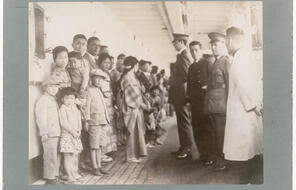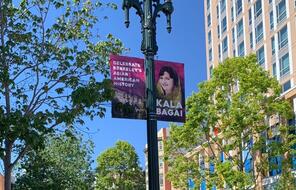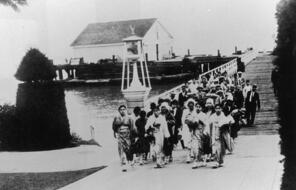Quotes from Historians Erika Lee and Judy Yung
Historian Erika Lee:
The immigration station on Angel Island was widely recognized as the “main gateway” into the United States from Asia. . . . While popularly called the “Ellis Island of the West,” the immigration station on Angel Island was in fact very different from its counterpart in New York. Ellis Island, mainly a processing center for European immigrants, was governed by American immigration laws that restricted but did not exclude European immigrants. Angel Island, on the other hand, was the chief port of entry for Chinese and other Asian immigrants and represented American exclusion policies. Immigrants on Ellis Island usually only spent a few hours or at most a few days at the island depot, whereas Asians, and particularly Chinese, on Angel Island counted their detention time in weeks, months, and even years. Ellis Island was a processing station of entry, but Angel Island’s purpose was to keep immigrants out . . . 1
Historians Erika Lee and Judy Yung:
Although the Angel Island Immigration Station was designed to address San Francisco’s unique status as the primary entryway for Chinese coming to the United States, an increasingly diverse group of immigrants from Europe, Asia, and Latin America arrived at the station over the years. Between 1915 and 1920, non-Asians represented approximately one-third of the immigrants applying for admission at the port of San Francisco. After 1924, non-Asians represented about 15 percent of all arrivals. Russians and Mexicans came to America seeking refuge from the revolutionary violence and disorder ravaging their homelands; Japanese “picture brides” and Chinese “paper sons” crossed the Pacific to join their families; Sikh and Filipino laborers sought work in the fields of California’s Central Valley; and Korean, Russian, and Jewish refugees hoped to find freedom from religious and political persecution . . . 2
How to Cite This Reading
Facing History & Ourselves, “Quotes from Historians Erika Lee and Judy Yung”, last updated January 27, 2023.













